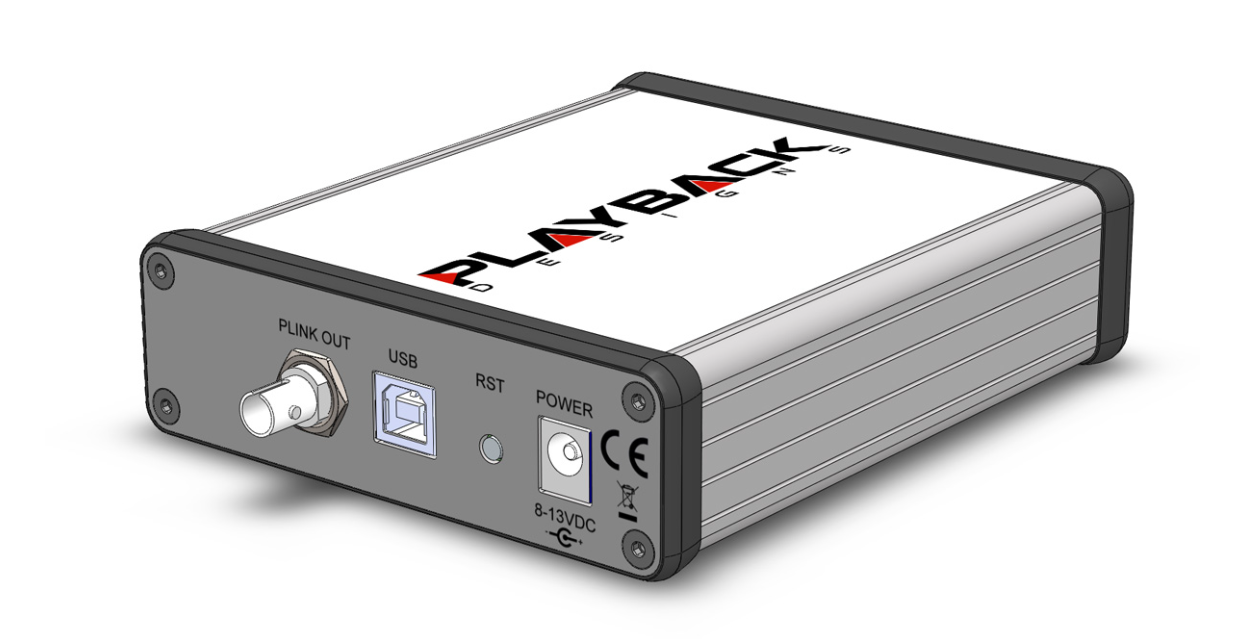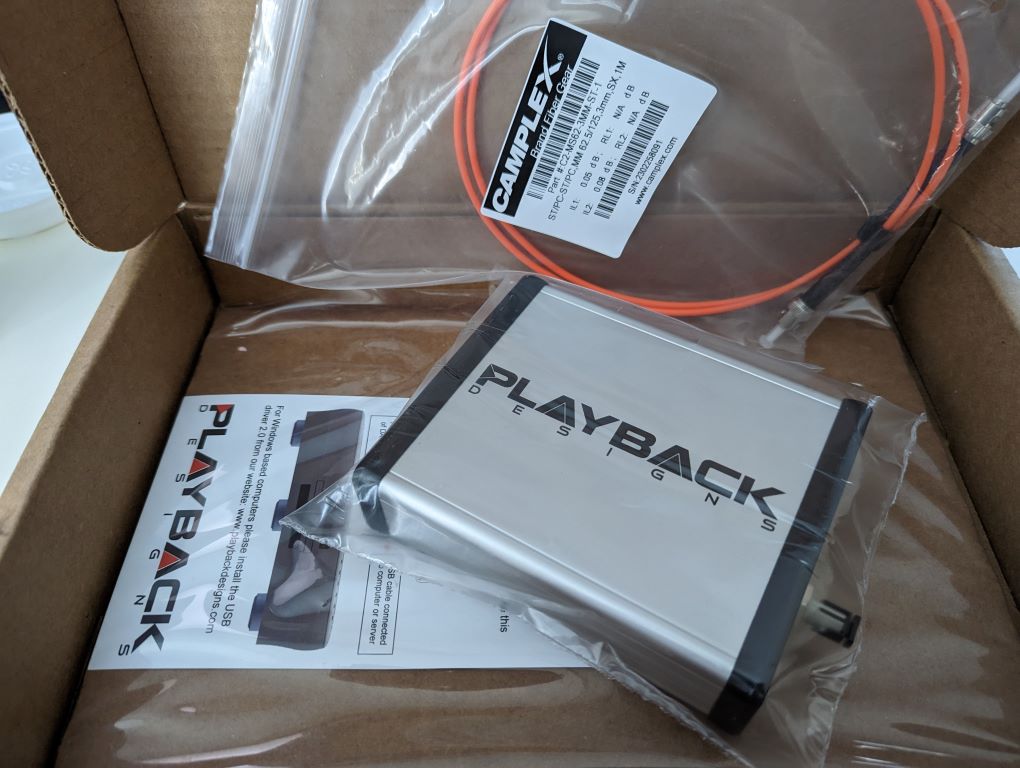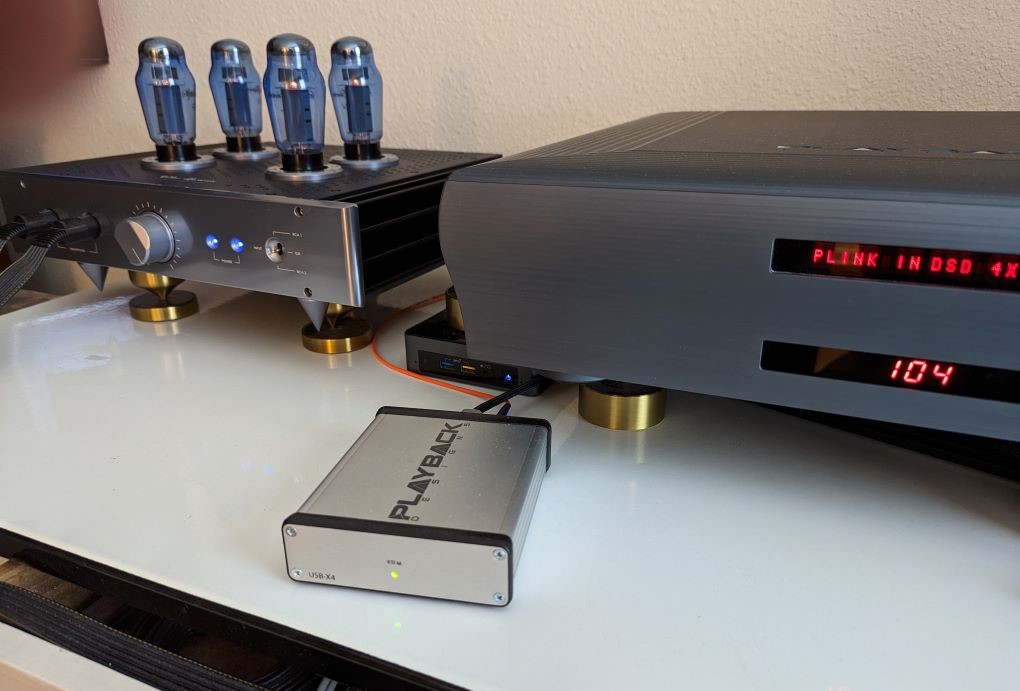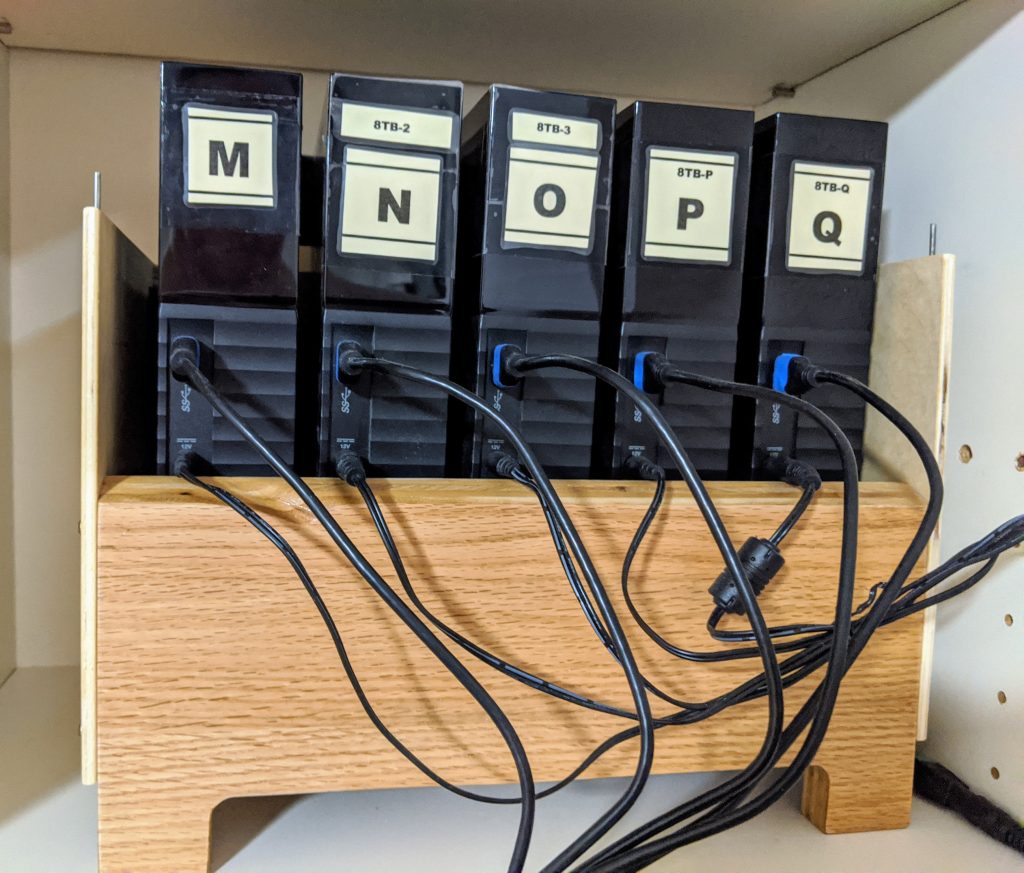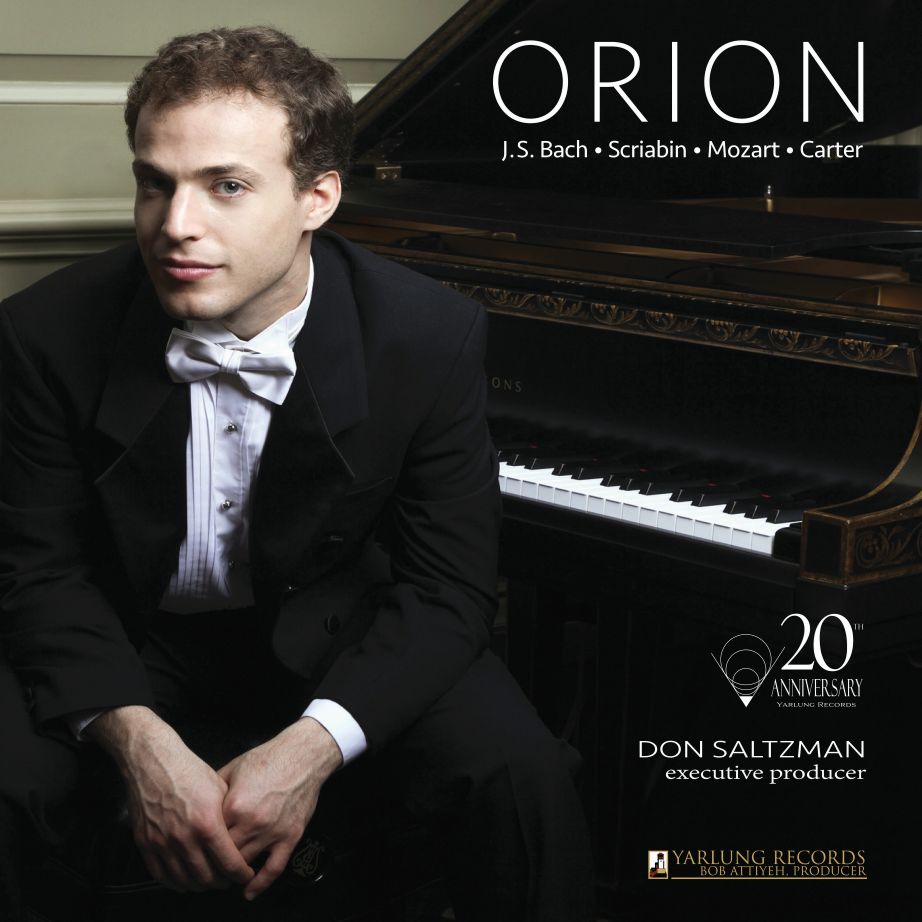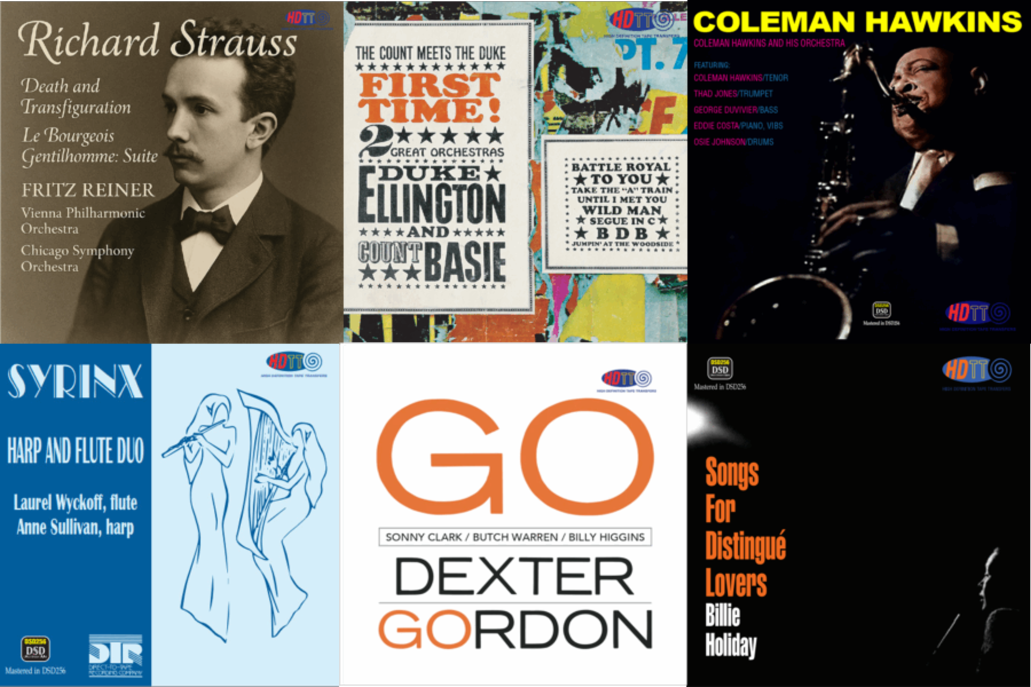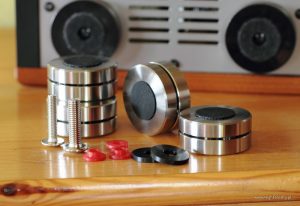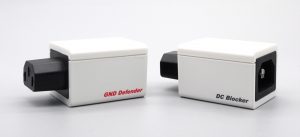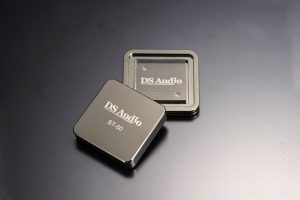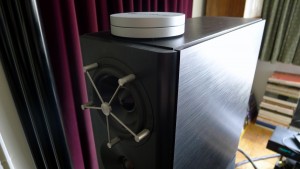Ann and I are always interested in steps we can take to bring our listening to life. For us, this often means seeking greater clarity, greater transparency, to the sound. Years ago, it was the clarity we heard when listening to the monstrous resolution delivered by the Walker Audio Proscenium Turntable—a veritable vinyl grooves vacuum cleaner in its ability to extract detail. (See Dr. David's photo essay HERE.) Over the past several years with our movement to all-digital playback, our mainstay of monstrous resolution and musicality has been the incredible Playback Designs MPD-8 DAC—simply a miracle of digital reproduction and detail (you can find my comments about the MPD-8 DAC HERE).
When we first received the MPD-8, I asked its designer, Andreas Koch, what further changes/additions in our system might make the sound we heard even better. His reply: adding his Playback Designs USB interface (version X-III at that time) might let us hear a bit greater clarity. But he thought the improvement would be subtle since the same circuitry was already built into the MPD-8's input. So, we held off.
With the announcement of the new model, the USB-X4, I decided it was time we should check this out. I got permission from Dr. David to ask Andreas if he would be willing to send me a sample unit for review, and Andreas graciously agreed to do so. About a week later the unit arrived at our door. I've had it installed in our primary system for about two weeks now and I've been listening to it as it burned in (and, yes, it does require some burn in time).
But Ann had not listened... until yesterday. When I came out to our listening area she commented, "I can hear Andrea's device at work." Oh? So, when you say that, what are you hearing? "It's cleaner."
Okay. And that could be the end of the story. If you've ever read any of my earlier articles about our journey these past few years into digital, you've likely read that Ann always hears things in 15 seconds that I'm still trying to sort out 30 minutes later. But, she is kind to me and she agreed to sit for a more complete back and forth comparison to better clarify what we hear.
And, we're here to tell you that the improvement is noticeable, decidedly audible, and very much to be enjoyed.
More to say about this below. For now, what IS this device and what's going on inside it?
Such a small device. Such plain packaging. One input, one output. What the dickens is going on with this thing? This, perhaps, is the beauty of it.
The USB-X4 Interface does just one thing: it takes the incoming digital data stream from one's computer via USB, cleans it, clocks it and sends it out via Playback Design's proprietary fiber optic PLINK interface to a Playback Designs piece of equipment. It is not a universal device—it is a proprietary Playback Designs accessory device. So, its market appeal is clearly limited just to owners of Playback Designs gear. But, for those of us with Playback Designs equipment, what a nice improvement this little device can make!
What it does, paraphrased from Playback Designs' explanation...
The interface is designed to isolate any USB source from the DAC, which is highly sensitive to any electrical noise. Any digital source with a USB host interface can connect to the USB-X4. (In our case, it's our Intel Core i5 NUC on which we have JRiver Media Center installed.) The USB-X4 is then connected to any of Playback Design's DACs or combination Player/DACs through a proprietary fiber optical connection, "PLINK."
Any USB interface requires a processor for reception and transmission. The USB standard also requires a very specific clock frequency for its basic transmission and, unfortunately, that clock is not any integer multiple of any audio sample rate. This means that some degree of "frequency beating" can be expected between the USB clock and the audio sample rate if the USB receiver circuitry is in the same chassis as the digital audio processor (DAC, player, etc.). This frequency beating can result in an audible effect due to the extreme sensitivity of the DAC.
The USB connection also requires a metal-to-metal connection between the computer device and the chassis in which the DAC is mounted. Thus, with simply a USB connection between the components, some transfer of electrical noise is always possible.
The USB-X4 seeks to solve these problems in three ways:
- Physical separation - The USB-X4 is a small separate chassis that can be physically located far from the sensitive DAC
- Electrical separation - By using a high quality fiber optic cable at its output to connect to the chassis containing the DAC, there is no galvanic connection between your server and DAC. Noise passed electrically is thus eliminated, stopped at the fiber optic interface.
- Jitter prevention - By applying the same re-clocking / buffering algorithm (PDFAS) as all of Playback Designs other products (DAC, transport, player), the data stream is both cleaned of any existing asynchronous clock that might cause frequency beating, and the cleaned data stream is re-clocked to an internal high quality audio clock that is synchronous to the audio sample rate (no frequency beating).
Since this PDFAS algorithm / circuit is in all of the other Playback Designs products, isn't this duplicative? What's the point?
To which Andreas Koch responds: "While our products with internal USB interface do a good job in compensating for this effect, a physically external USB interface could provide an extra level of separation that otherwise could not be possible." Win, win, win. That duplication provides an additional layer and cleaning to the data stream, plus adds the other benefits of having it occur inside a physically separate chassis that is then electrically isolated from the DAC chassis via the optical fiber connection.
And about that fiber optic interface... "PLINK does not use the same media as TosLink, but it is based on a much higher quality and lower jitter media that is used for very high bandwidth communication links where receivers require an extremely low jitter signal for reliable decoding. For PLINK we use a much lower bandwidth protocol than the specified limit of the media to further increase robustness against jitter."
The cable supplied with the unit I received was an industry standard Camplex Brand fiber optic cable.
Power source
The USB-X4 is designed to operate directly off of the power supplied by the USB interface, and that is how we listened to it. An optional external power source can be connected, with a voltage of 8V-10V DC. Andreas opined that a good quality linear power supply might add a slight further improvement in sound quality. He said that the circuit in the USB-X4 was identical to the new Edelweiss Streamer (MPS-X) which is designed to accomplish the same separation of USB input plus more input options. He said that if there is any audible difference, it will be due to the linear power supply in the Edelweiss Streamer versus just the USB power on which I'm relying. I don't have another linear power supply available to make a comparison check, but that would be interesting to hear.
What we hear
First, as I alluded above, there is a burn in period (or break in period) for this device as with pretty much any other component I've ever used. When I first installed it between my server and MPD-8 DAC, the sound became sharp, thin and a bit two-dimensional. Classic, right? Well, I kept playing and listening over the next hour and heard the sound improve dramatically. Fuller, more rounded and fleshed out, more three-dimensional. Clearly, no assessment could yet be made. So, for the next two weeks, I simply left it in the system and played music through it, not stopping to assess what effect it may have versus the system without it. Even when the amps were off, I left it playing music from the server to the DAC, just keeping those data bits flowing. And all was sounding just fine. I wasn't yet critically listening for any differences in the system; I was just playing music.
And then yesterday, Ann listens for the first time and says, "I can hear Andrea's device at work." And now we're back to where we started this article.
So, we listened together critically. Our listening was to Pure DSD256 files from Yarlung and TRPTK which we knew well, plus an orchestral recording in DXD (the original edit master file) and a solo piano recording in DXD from Channel Classics. These are all superb recordings with immensely good sound quality. We limited our critical comparative listening to just about one minute of each file to help preserve some sense of aural memory.
We listened to all four selections first with the USB-X4 Interface in the system, then with the USB connection only. The same USB cable was used in both sessions, we just moved it from the USB-X4 input to the MPD-8 input and switched input selections at the MPD-8's control panel.
After the first round of comparison, I asked Ann if she'd like to go back to hearing the system with the USB-X4 installed once again. Her reply was, "What's the point? The improvement in sound quality with the USB-X4 in the system is so immediately apparent, so overwhelmingly apparent, I don't have any need to listen further."
Oh. Well, what do you hear?
"With the USB-X4 in the system, there is just greater clarity. The instruments sound more natural and more alive. When we took the USB-X4 out of the system and listened to the orchestral work again, those opening chords sounded dead by comparison. With the USB-X4, the sound is alive."
Both Ann and I are hearing the same things with the USB-X4. The sound opens up, instrumental timbre is more readily apparent, there is more silence between the notes, there is more air and openness to the sound, there is overall a greater clarity to the sound of the instruments and to the acoustic environment of the recording venue. While our critical comparative listening session was short, I've been listening for two weeks to all kinds of music as I listen for my music reviews every day. What we agreed we heard in this critical comparative session is exactly what I've been hearing all along. We've now just put a period on it.
When starting out on this exercise, we both expected to hear some difference, but we expected it would be subtle. After listening, we agree the improvement is NOT subtle. The difference is significant. Ann said, "Tell Andreas I am very, very impressed!" And she then asked, "How much does this baby cost?" Oh, my. When she asks, one knows she's been hooked by what she's heard.
Some concluding thoughts
First, be reminded that this is a proprietary Playback Designs device that only works with other Playback Designs equipment using their PLINK optical connection. It works out of the box with the more recent generations of their equipment: Dream series, Edelweiss series, and Sonoma series. On special order the USB-X4 can be programmed to be compatible with their older 5-series products. My expectation is that it will provide the same type of improvement to the sound as we're hearing with the Dream Series MPD-8.
Second, you might be better off making the plunge to it's bigger brother, the Edelweiss Streamer MPS-X which provides the same functionality, plus an exceptional linear power supply that may further improve results, plus streaming connections from the internet (such as Tidal, Qobuz, Deezer and vTuner that
can be controlled via an app on a tablet) and from network attached storage. For those who use Roon, Andreas tells me the MPS-X is a Roon-ready device. The USB-X4 does nothing with Roon all by itself.
Third, this little device is rather expensive. Will it make enough of a sound difference for you to be worth the investment? The sound improvement is definitely there. But we all have our budget constraints and competing needs for available funds. Ann and I are going through that discussion now.
Later: Oh yes, we purchased the review unit. We decided it just shouldn't leave.
And a later follow-up after another couple of weeks: Out of the blue this morning came the comment from Ann, "I'm hearing Andrea's USB thing in our system again this morning. What's it called?" I raised an eyebrow and received the clarification: "Oh, everything definitely sounds better!" So, continuing ratification of the improvements wrought by the USB-X4 here in our listening room.
USB-X4 Interface
Retail: $3000
Playback Designs LLC
Alamo, CA 94507, USA
+1 925.820.4780




